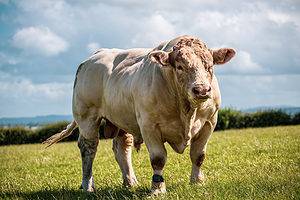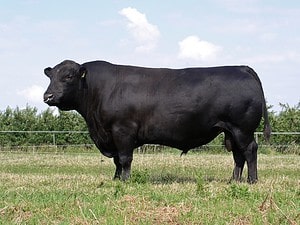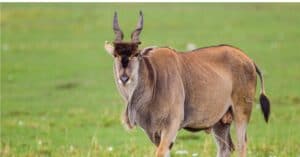Cows are one of the most easily recognized animals on Earth. When most people think of cows, they often picture the familiar black and white ones. Or they might imagine the iconic, long-haired Highland cows that live serene lifestyles in the Scottish countryside. But did you know there are around 80 unique cow breeds found in the United States? Each one has its own unique characteristics, contributing to the expansive agricultural heritage and cultural significance of these gentle giants. Plus, with over 1,000 unique breeds across the globe, cows are actually more diverse and intriguing than most people imagine! So, if you are interested in all things relating to cows, read on. This article will explore the diversity of the Bos taurus, or Bos indicus, species to uncover six of the most interesting cows from around the world!
Holstein Friesian Cows

A heifer is a female cow that has not yet had any offspring.
©Rawpixel Ltd / CC BY 2.0 - License
It comes from Frisia, which is a part of the Netherlands and Germany. It’s one of the most famous cows in the world! Holstein dairy cows are known for their striking black and white coloration, which resembles that of a patchwork quilt. This distinction is the result of years of selective breeding to increase the breed’s milk production. In fact, a single Holstein cow produces around 23,000 pounds — or 2,674 gallons — of milk each lactation period! This makes them one of the top choices for dairy farming, especially in North America, Europe, and Australia. Beyond that, Holsteins are characterized by their calm and docile demeanor. This trait makes them easier to handle and manage, which is especially important to farmers running non-commercial dairy operations.
Highland Cattle
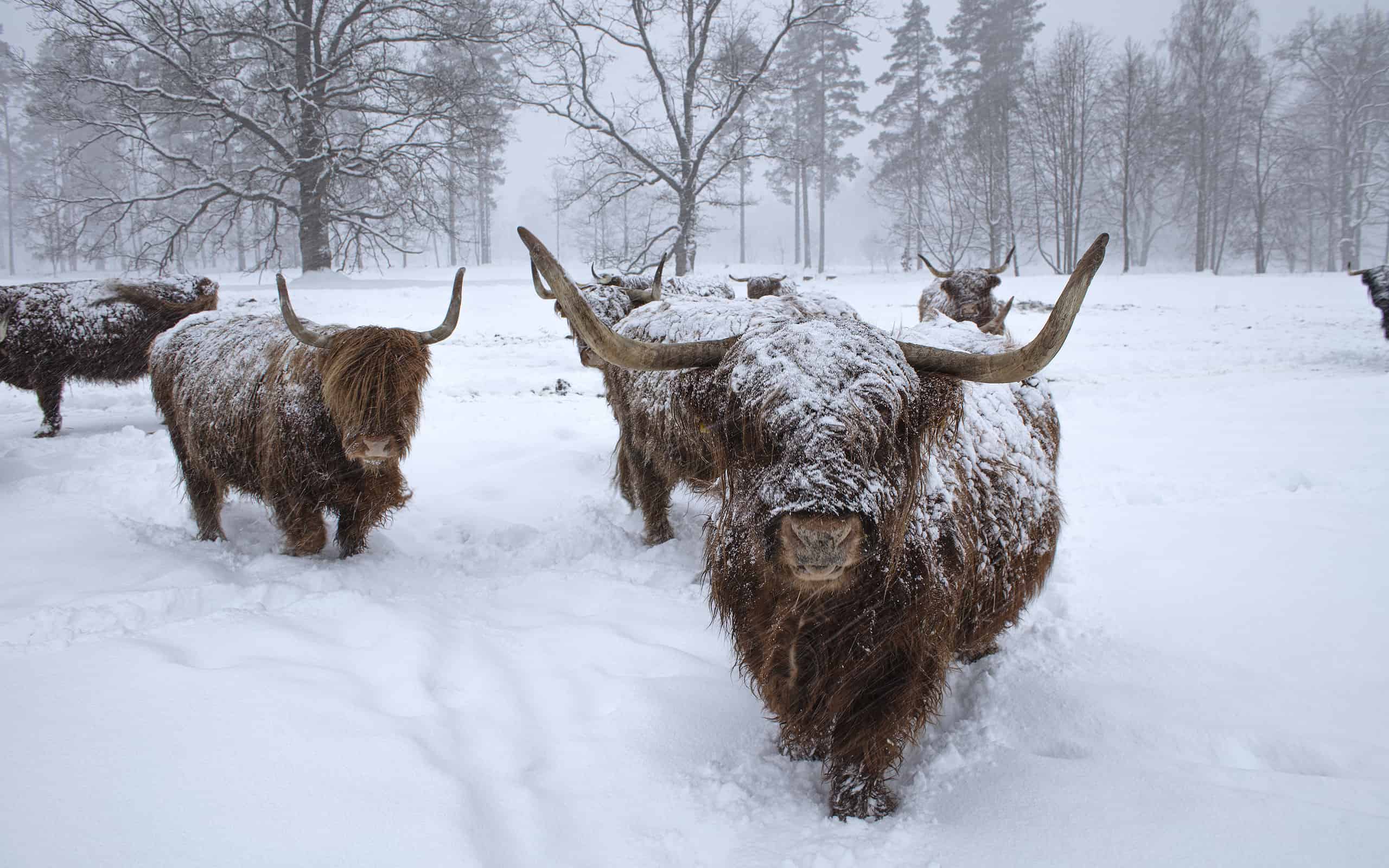
A male’s horns are thicker and will curve forward, whereas a females’ horns are thinner and will curve upwards.
©Viesinsh/iStock via Getty Images
Native to the Scottish Highlands, these fluffy cows are easily recognized by their long, shaggy coats and impressive horns! To start, Highland cattle are well-adapted to living in harsh climates. This is largely thanks to their thick, waterproof fur, which rain and snow slides off of. Plus, their large horns are quite useful too! These built-in tools allow them to forage for food in the snow. They also serve as protection against predators like coyotes, wolves, and mountain lions. Along with their cuddly appearance, their friendly nature has also made them popular animals for petting zoos around the world. Having said that, they are most commonly bred for their meat, which is lower in cholesterol and higher in protein than other breeds.
Ankole-Watusi Cattle

Both male and female Ankole-Watusi have the largest horns of any cattle species, growing up to 8 feet long from tip to tip.
©iStock.com/RAUL RODRIGUEZ
Experts estimate the Ankole-Watusi cow first came into existence over 2,000 years ago in Africa. Ankoles are one of the most unique cows from around the world. They are believed to be the result of breeding Egyptian Longhorn cattle and Indian Zebu Longhorns. Famous for their gigantic lyre-shaped horns, Ankole-Watusi cattle have many uses for their horns. Some examples include self-defense, displaying their status, and regulating body temperature. Furthermore, they are revered by the Watusi tribe in Rwanda and Burundi because they symbolize wealth, status, and power. This cow breed is also used within the community for rituals, ceremonies, and traditional practices. Sadly, due to their persistent slaughter and crossbreeding, this unique cow breed is expected to become extinct in Africa in less than 20 years. That is, if nothing is done to save them.
Belgian Blue
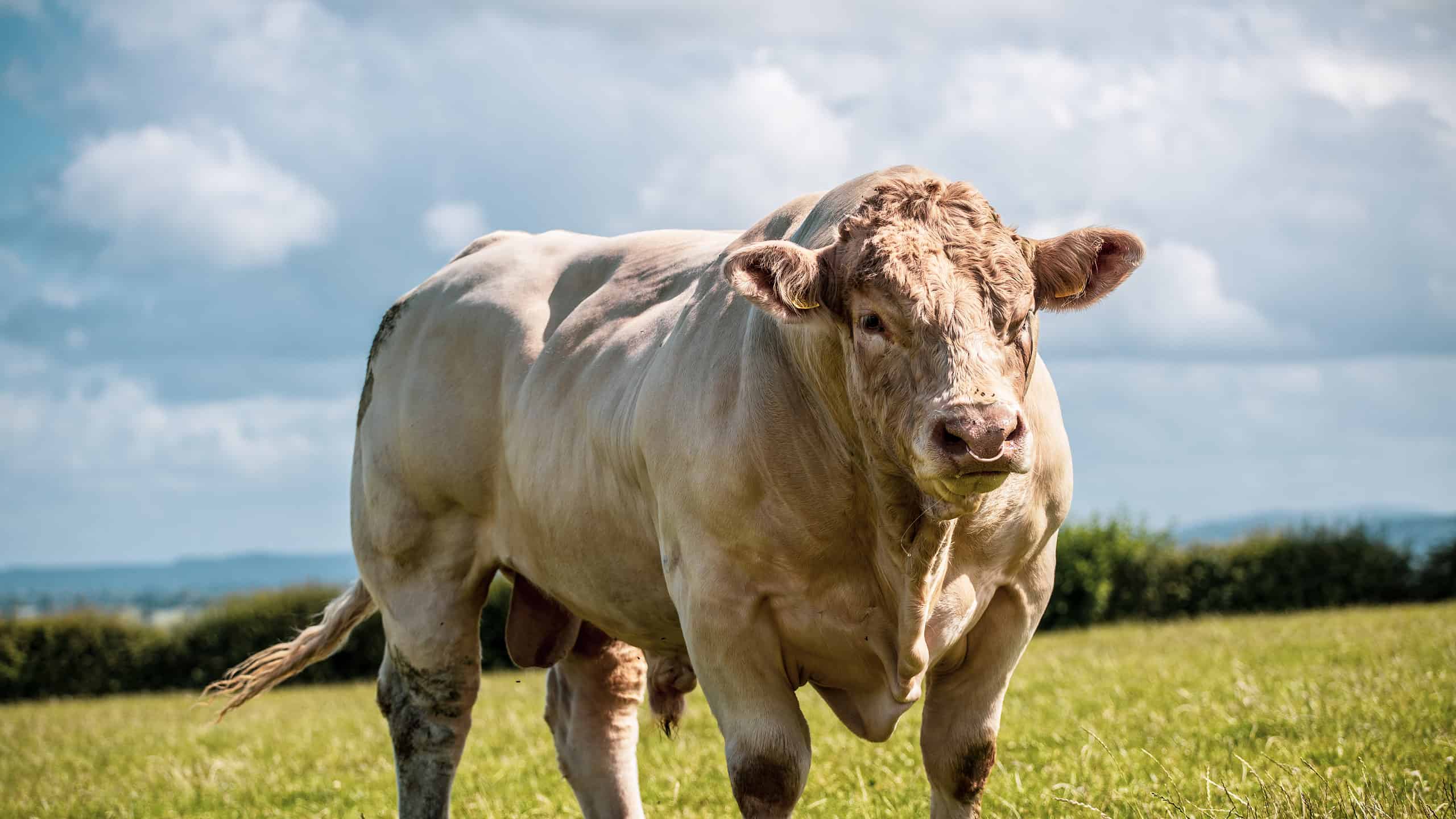
The word cow is a broad term that refers to members of the bovine family.
©Lazarov/Shutterstock.com
Hailing from Belgium, the Belgian Blue cow is renowned for its exceptional physique and exaggerated musculature. Otherwise known as “double muscling,” this seemingly over-the-top genetic mutation is the direct result of over 150 years of highly selective breeding. This unique genetic mutation gives this breed their massive, lean structure, which makes them popular in the beef industry. In fact, they are highly valued and sought after in the culinary world due to their superior taste and tenderness. Despite their intimidating appearance, Belgian Blues are known for their gentle temperament and overtly calm demeanor.
Zebu

Zebu cattle are the humped cows of the world. Most of the Zebu cattle found in the United States have the thoracic-hump type, meaning their hump is at their shoulders.
©Scott Bauer - Public Domain by United States Department of Agriculture
Originating from India, Zebu cattle are widely known for their distinctive humps, loose skin, and droopy ears. They are a highly heat-tolerant breed, well-suited for hot, humid climates. Because of this, they are commonly found in India, Pakistan, Nepal, Bangladesh, China, and Madagascar. Zebu cattle are highly valued for their adaptability, disease resistance, and ability to thrive in challenging environmental conditions. They are predominately used for drought and ridding, but they can also be utilized for meat and milk production. Having said that, Hinduism specifically considers the Zebu to be sacred, along with other cattle, so they are protected across India. This is mainly because the Mahabharata instructs followers to treat this animal with the same respect as “one’s own mother.” They also symbolize Mother Earth, wealth, love, Brahmans, and various deities such as Shiva, Indra, and Krishna.
Chianina
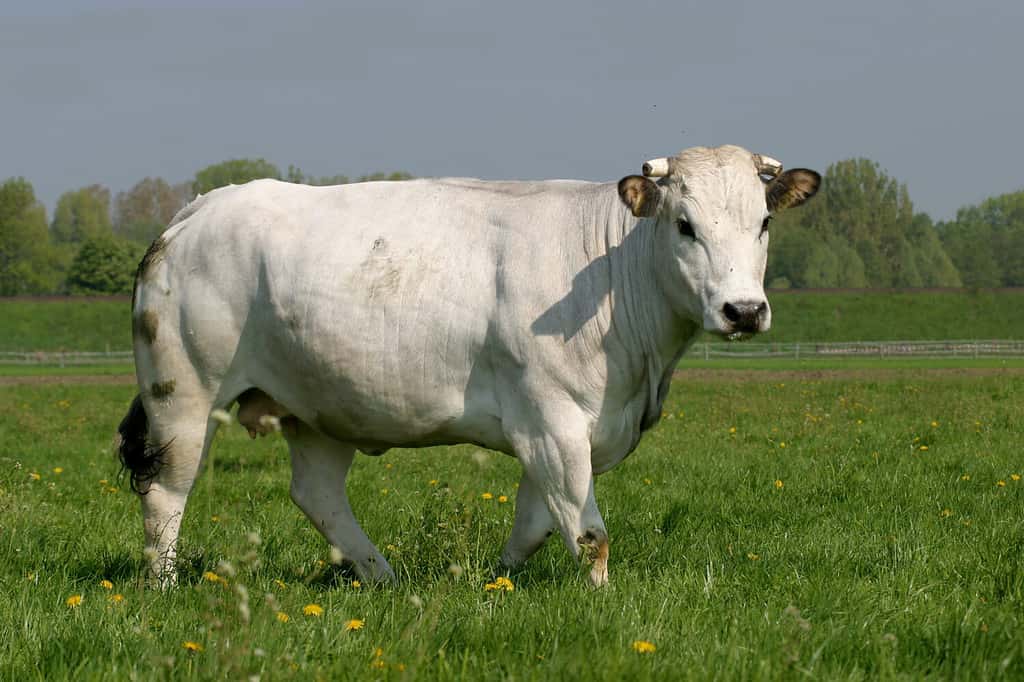
Chianinas are the largest cows from around the world!
©R. Maximiliane/Shutterstock.com
Raised and bred throughout Italy for over 2,200 years, the Chianina cattle breed is native to Italy — particularly the Valdichiana area. Renowned for their size, they are one of the oldest and largest cattle breeds in the world, dating back to ancient Roman times. These eccentric white cows are renowned for their towering stature and massive size, with bulls reaching heights of over six feet at the shoulder! Chianina cattle are also prized for their high-quality beef and long, smooth muscling, which makes them a popular choice for beef production and agricultural shows. As an interesting note, they are extremely resistant to disease and have a higher twin rate than any other cow breed!
All in all, the diverse array of cows from around the world showcases not only their versatility, but their cultural significance as well. Cows do much more than provide us with dairy, meat, and leather. They are massive powerhouses that are capable of fulfilling so many duties, from preventing soil erosion and increasing biodiversity to safeguarding wildlife habitats and producing much-needed, natural fertilizer. Nevertheless, their intrinsic value goes far beyond human utility and the benefits they provide our species. Cows are remarkable beings that are vital to our planet’s ecosystem, and they are even considered sacred in some parts of the world!
The photo featured at the top of this post is © Astrid Gast/Shutterstock.com
Thank you for reading! Have some feedback for us? Contact the AZ Animals editorial team.




